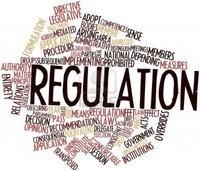During her presentation at the Drug Information Association’s (DIA) Biosimilars Conference, Dr Kellie Taylor, Associate Director of the Office of Medication Error Prevention and Risk Management in the Office of Surveillance and Epidemiology in US Food and Drug Administration’s (FDA) Center for Drug Evaluation and Research’s (CDER), gave an update on FDA’s naming policies for biologicals, including biosimilars [1].
FDA published draft guidance on naming biologicals in August 2015 [2] and issued the final version of this guidance in January 2017 [3]. The naming convention outlined in the guidance applies to all products, both prospectively and retrospectively. The agency’s approach to applying the naming convention prospectively is outlined here.
For prospective non-proprietary naming:
- Suffix evaluation by FDA occurs as part of the biologic license application (BLA) review
- In CDER, coordinated by Division of Medication Error Prevention and Analysis (DMEPA)
- In CBER (Center for Biologics Evaluation and Research), coordinated by the Advertising and Promotional Labeling Branch (APLB)
- FDA may generate a suffix for designation in the proper name, if an applicant
- Requests a FDA‐generated suffix be assigned to their product
- Does not request FDA review of proposed suffix(es)
- Does not request review of a suffix FDA finds acceptable or within an appropriate time frame to allow FDA sufficient time to review
- FDA encourages applicants requesting FDA review of suffixes to conduct due diligence on their proposed suffixes
- Any supporting information that is provided will be considered by FDA in its evaluation of proposed suffixes
During suffix review FDA:
- Assesses the format to see whether the suffix is:
- Composed of four lower‐case letters of which at least three are distinct
- Does not contain numerals and other symbols
- Devoid of meaning
- Unique to each product
- Non-proprietary
- Attached to the core name with a hyphen
- If the suffix format does not raise any concerns, FDA proceeds to review each suffix to determine that it will not:
- Include abbreviations commonly used in clinical practice in a manner that may lead the suffix to be misinterpreted as another element on the prescription or order
- Contain or suggest any drug substance name or core name
- Look similar to or be capable of being mistaken for the name of a currently marketed product, e.g. should not increase the risk of confusion or medical errors with the product and/or other products in the clinical setting
- Be too similar to any other FDA‐designated non-proprietary name suffix
- Look similar to or otherwise connote the name of the license holder
- Be false or misleading, such as making representation with respect to safety or efficacy
The agency says that application of the naming convention to originator and related biologicals (351(a) BLAs) and biosimilars (351(k) BLAs) encourages routine use of designated suffixes in ordering, prescribing, dispensing and record-keeping. In addition, it avoids inaccurate perceptions of the safety and effectiveness of biologicals based on their licensure pathway.
By end of 2017, FDA has approved and assigned names to nine biosimilars [4]:
- Zarxio (filgrastim‐sndz), biosimilar to Neupogen
- Inflectra (infliximab‐dyyb), biosimilar to Remicade
- Erelzi (etanercept‐szzs), biosimilar to Enbrel
- Amjevita (adalimumab‐atto), biosimilar to Humira
- Renflexis (infliximab‐abda), biosimilar to Remicade
- Cyletezo (adalimumab‐adbm), biosimilar to Humira
- Mvasi (bevacizumab‐awwb), biosimilar to Avastin
- Ogivri (trastuzumab-dkst), biosimilar to Herceptin
- Ixifi (infliximab-qbtx), biosimilar to Remicade
Related articles
FDA approach to retrospectively naming biologicals
FDA update on naming biologicals
References
1. Taylor K. FDA Update on biological product naming. DIA Biosimilars Conference; 24-25 October 2017; Bethesda, Maryland, USA.
2. GaBI Online - Generics and Biosimilars Initiative. FDA issues draft guidance on naming biologicals [www.gabionline.net]. Mol, Belgium: Pro Pharma Communications International; [cited 2018 Mar 30]. Available from: www.gabionline.net/Guidelines/FDA-issues-draft-guidance-on-naming-biologicals
3. GaBI Online - Generics and Biosimilars Initiative. FDA issues final guidance on naming biologicals [www.gabionline.net]. Mol, Belgium: Pro Pharma Communications International; [cited 2018 Mar 30]. Available from: www.gabionline.net/Guidelines/FDA-issues-final-guidance-on-naming-biologicals
4. GaBI Online - Generics and Biosimilars Initiative. Biosimilars approved in the US [www.gabionline.net]. Mol, Belgium: Pro Pharma Communications International; [cited 2018 Mar 30]. Available from: www.gabionline.net/Biosimilars/General/Biosimilars-approved-in-the-US
Permission granted to reproduce for personal and non-commercial use only. All other reproduction, copy or reprinting of all or part of any ‘Content’ found on this website is strictly prohibited without the prior consent of the publisher. Contact the publisher to obtain permission before redistributing.
Copyright – Unless otherwise stated all contents of this website are © 2018 Pro Pharma Communications International. All Rights Reserved.








 0
0











Post your comment